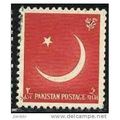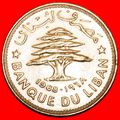Barnstaple, Devon - River Taw, Trinity Church - Dennis postcard c.1970s
- Condition : Used
- Dispatch : 2 Days
- Brand : None
- ID# : 182506159
- Quantity : 1 item
- Views : 172
- Location : United Kingdom

- Seller : justthebook (+1699)
- Barcode : None
- Start : Mon 10 Jun 2019 10:32:49 (BST)
- Close : Run Until Sold
- Remain : Run Until Sold
More Listings from This Seller view all
Seller's Description
- Postcard
- Picture / Image: River Taw, Barnstaple, Devon - shows Trinity Church
- Publisher: Dennis (B 3924L)
- Postally used: no
- Stamp: n/a
- Postmark(s): n/a
- Sent to: n/a
- Notes / condition:
Please ask if you need any other information and I will do the best I can to answer.
Image may be low res for illustrative purposes - if you need a higher definition image then please contact me and I may be able to send one. No cards have been trimmed (unless stated).
------------------------------------------------
Postage & Packing:
Postage and packing charge should be showing for your location (contact if not sure).
No additional charges for more than one postcard. You can buy as many postcards from me as you like and you will just pay the fee above once. Please wait for combined invoice. (If buying postcards with other things such as books, please contact or wait for invoice before paying).
Payment Methods:
UK - PayPal, Cheque (from UK bank) or postal order
Outside UK: PayPal ONLY (unless otherwise stated) please. NO non-UK currency checks or money orders (sorry).
NOTE: All postcards are sent in brand new stiffened envelopes which I have bought for the task. These are specially made to protect postcards and you may be able to re-use them. In addition there are other costs to sending so the above charge is not just for the stamp!
I will give a full refund if you are not fully satisfied with the postcard.
----------------------------------------------
Text from the free encyclopedia WIKIPEDIA may appear below to give a little background information (internal links may not work) :
*************
Barnstaple i/ˈbɑːrnstəbəl/ or /ˈbɑːrnstəpəl/[1] is the main town of North Devon, England, and possibly the oldest borough in the United Kingdom. It is a former river-port, located at the lowest crossing-point of the River Taw, flowing into the Bristol Channel.
From the 14th century, it was licensed to export wool, since the merchants claimed that the town had been declared a free borough in Saxon times. This brought great wealth to Barnstaple, whose town centre still preserves a medieval layout and character. Later the town became an importer of Irish wool, but its harbour silted up, and it developed other industries, such as shipbuilding, foundries and sawmills. Its Victorian market survives, with its high glass and timber roof on iron columns. Barnstaple railway station is the terminus of a branch line from Exeter, known as the Tarka Line.
Since 1974, Barnstaple has been a civil parish governed by town council.[2] The parish itself had a population of 24,033[3] and including the satellite settlements known as the Barnstaple Town Area, it is 53,514.
The old spelling Barnstable[4] is now obsolete, but is retained by an American county and town and is still sometimes used for Bideford or Barnstable Bay.[5] The name is first recorded in the 10th century and is believed to derive from the Old English bearde, meaning "battle-axe", and stapol, meaning "pillar", referring to a post or pillar set up to mark a religious or administrative meeting place. The belief that the name derives from staple meaning "market", indicating that there was a market here from the foundation of the settlement, is incorrect, because the use of staple in that sense is not recorded in England before 1423.[6]
Barnstaple was formerly referred to as "Barum", from a contraction of the Latin form of the name (ad Barnastapolitum) in Latin documents such as the episcopal registers of the Diocese of Exeter.[7] Barum was mentioned by Shakespeare, and the name was revived and popularised in Victorian times, when it featured in several contemporary novels. The name Barum is retained in the names of a football team, brewery, and of several local businesses. The former Brannam Pottery works which was sited in Litchdon Street was known for its trademark "Barum" etched on the base of its products.
The earliest settlement in the area was probably at Pilton on the bank of the River Yeo, now a northern suburb of the present town. Pilton is recorded in the Burghal Hidage (c. 917) as a burhfounded by Alfred the Great,[8] and it may have been the site of a Viking attack in 893,[9] but by the later 10th century Barnstaple had taken over its role of local defence. Barnstaple had its own mint before the Norman Conquest.[8]
The large feudal barony of Barnstaple had its caput at Barnstaple Castle. It was granted by William the Conqueror to Geoffrey de Montbray, who is recorded as its holder in Domesday Book. The barony escheated to the crown in 1095 after Montbray had rebelled against King William II. William re-granted the barony to Juhel de Totnes, formerly feudal baron of Totnes. In about 1107, Juhel, who had already founded Totnes Priory, founded Barnstaple Priory, of the Cluniac order, dedicated to St Mary Magdalene.[10] After Juhel's son died without children, the barony was split into two, passing through the de Braose and Tracy families, before being reunited under Henry de Tracy. It then passed through several other families, before ending up in the ownership of Margaret Beaufort (died 1509), mother of king Henry VII. See Feudal barony of Barnstaple for full details.
In the 1340s the merchants of the town claimed that the rights of a free borough had been granted to them by King Athelstan in a lost charter. Although this was challenged from time to time by subsequent lords of the manor, it still allowed the merchants an unusual degree of self-government.[11] The town's wealth in the Middle Ages was founded on its being a staple portlicensed to export wool. It had an early merchant guild, known as the Guild of St. Nicholas. In the early 14th century it was the third richest town in Devon, behind Exeter and Plymouth, and it was the largest textile centre outside Exeter until about 1600.[12] Its wool trade was further aided by the town's port, from which in 1588 five ships were contributed to the force sent to fight the Spanish Armada. Barnstaple was one of the "privileged ports" of the Spanish Company,[13] (established 1577) whose armorials are visible on two of the mural monuments to 17th century merchants[14] in St Peter's Church, and on the decorated plaster ceiling of the former "Golden Lion Inn",[15] 62 Boutport Street (now a restaurant next to the Royal and Fortescue Hotel).[16] The developing trade with America in the 16th and 17th centuries greatly benefited the town. The wealthy merchants that this trade created built impressive town houses, some of which survive behind more recent frontages—they include No. 62 Boutport Street, said to have one of the best plaster ceilings in Devon.[17] The merchants also built several almshouses, and they ensured they would be remembered by installing elaborate monuments to their families in the church.[17]
By the 18th century, Barnstaple had ceased to be a woollen manufacturing town, but this business was replaced by the import of Irish wool and yarn, for which it was the main landing place; the raw materials were carried by land to the new clothmaking towns in mid- and east Devon, such as Tiverton and Honiton.[12] However, the harbour was gradually silting up—as early as c. 1630 Tristram Risdon reported that "it hardly beareth small vessels"—and Bideford, which is lower down the estuary and benefits from the scouring action of the fast flowing River Torridge, gradually took over the foreign trade.[12]
Although for a time between 1680 and 1730, Barnstaple's trade was surpassed by Bideford's, it retained its economic importance until the early 20th century,[12] when it was manufacturing lace, gloves, sail-cloth and fishing-nets, it had extensive potteries, tanneries, sawmills and foundries, and shipbuilding was also carried on.[18]
Barnstaple was one of the boroughs reformed by the Municipal Reform Act 1835. Between the 1930s and the 1950s the town swallowed the villages of Pilton, Newport, and Roundswell through ribbon development.
Listing Information
| Listing Type | Gallery Listing |
| Listing ID# | 182506159 |
| Start Time | Mon 10 Jun 2019 10:32:49 (BST) |
| Close Time | Run Until Sold |
| Starting Bid | Fixed Price (no bidding) |
| Item Condition | Used |
| Bids | 0 |
| Views | 172 |
| Dispatch Time | 2 Days |
| Quantity | 1 |
| Location | United Kingdom |
| Auto Extend | No |



 for 1 item(s)
for 1 item(s)

















